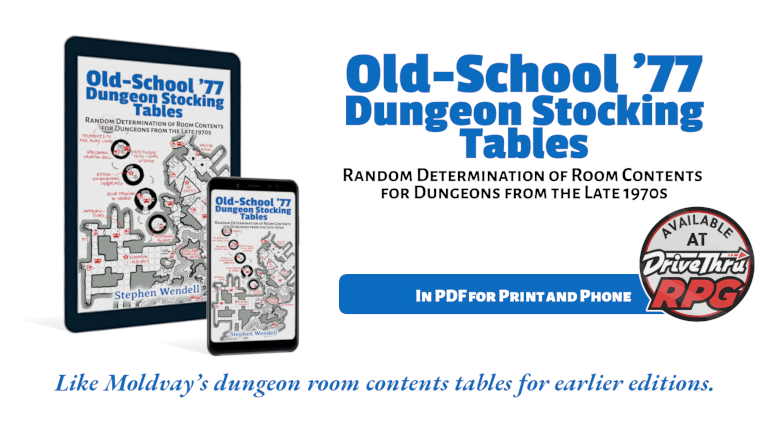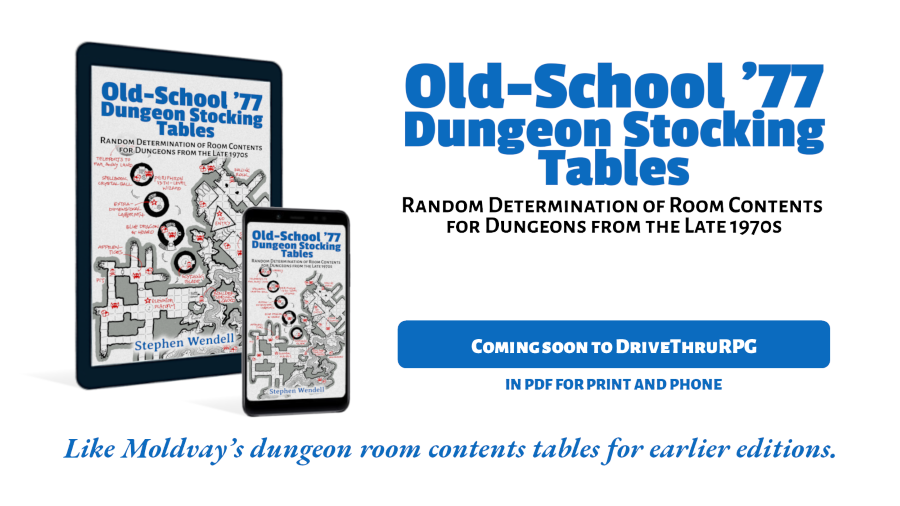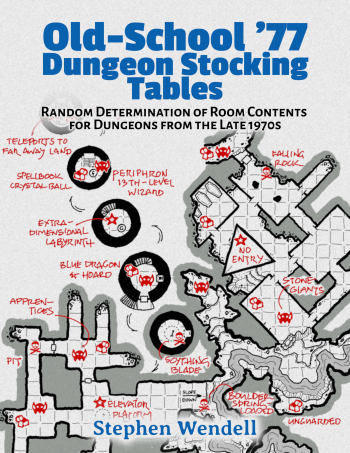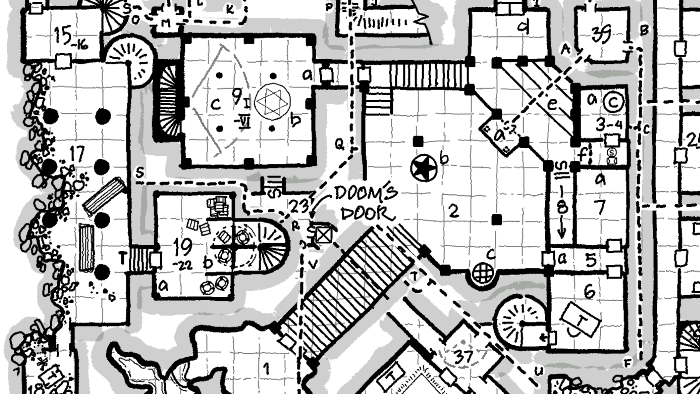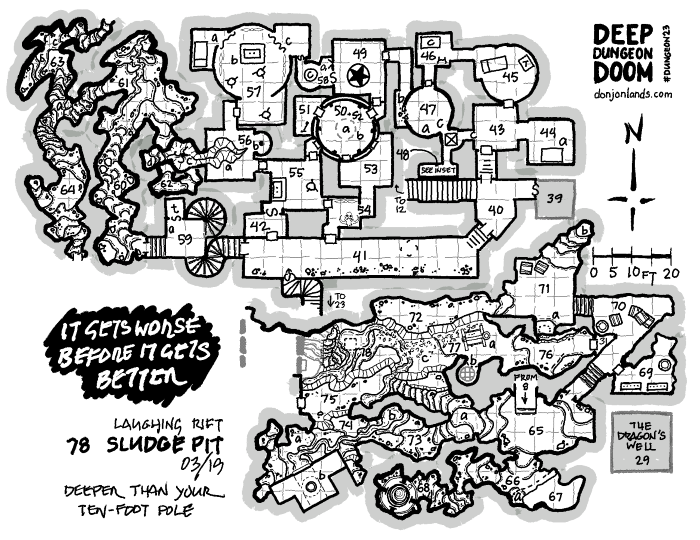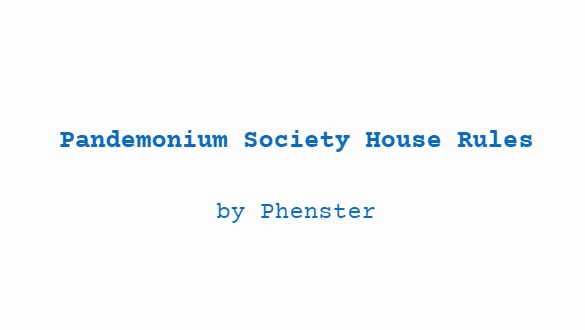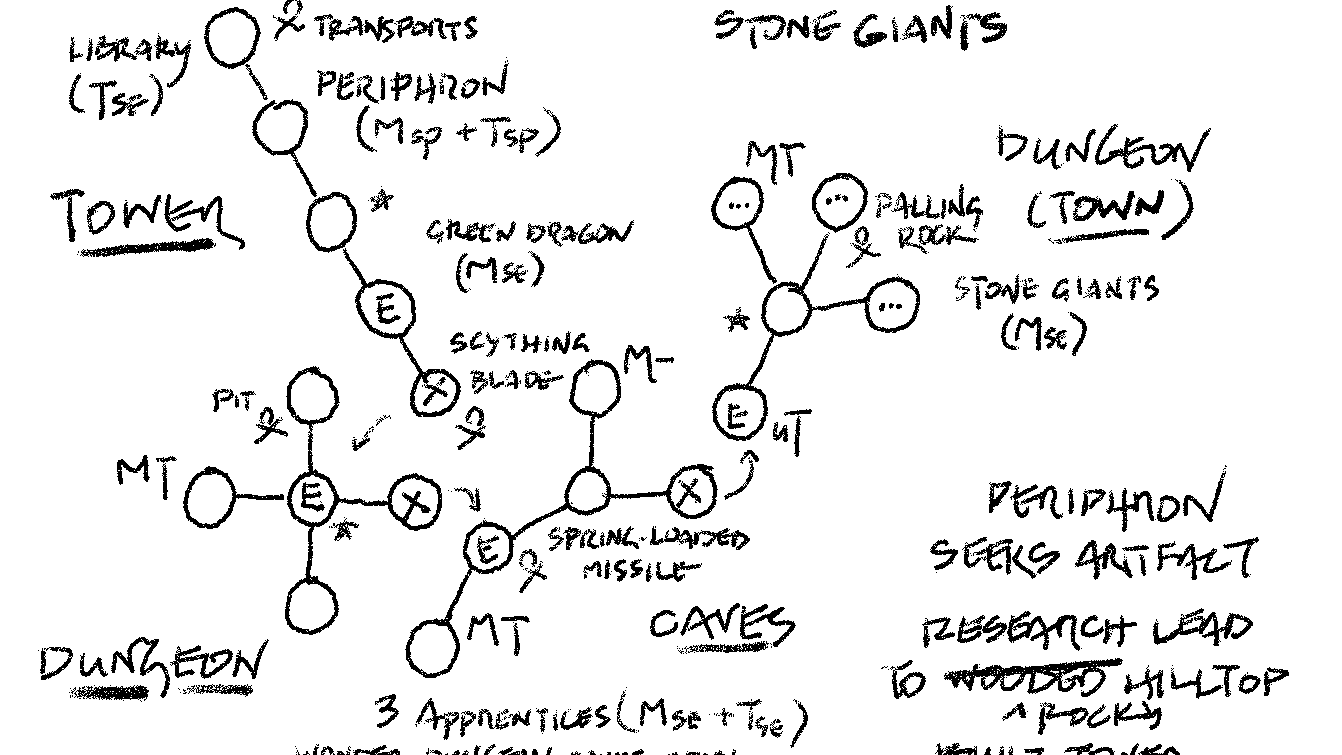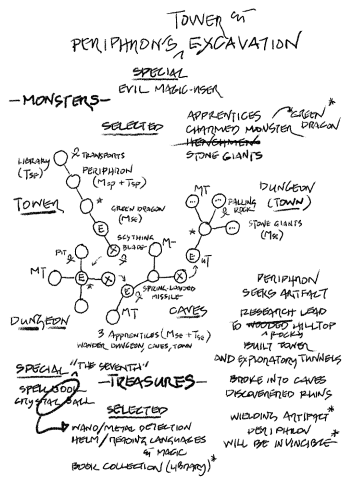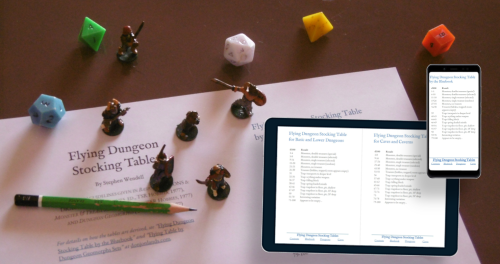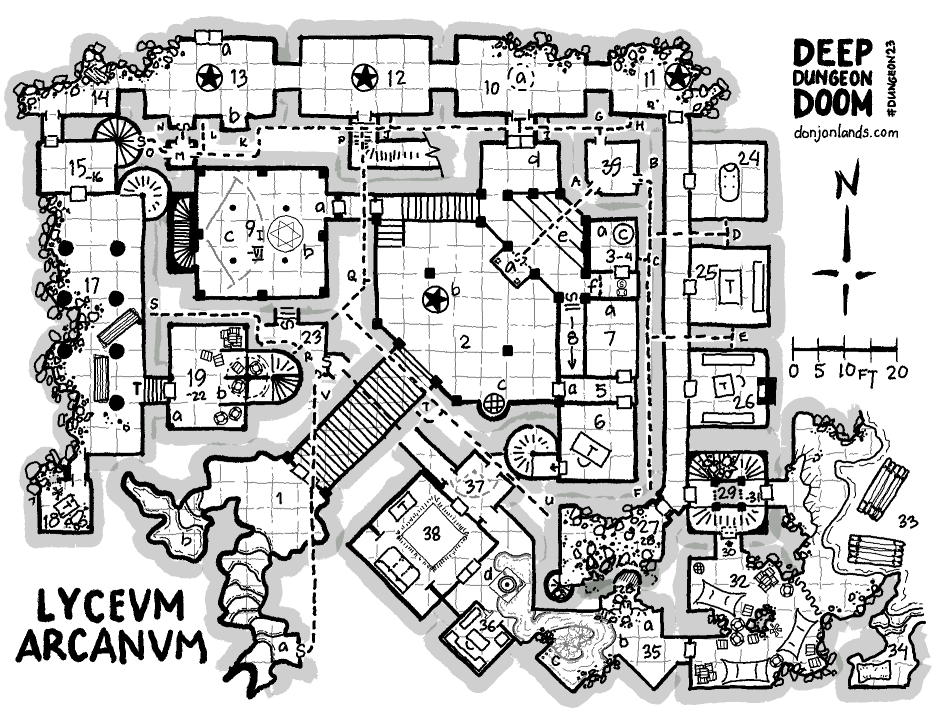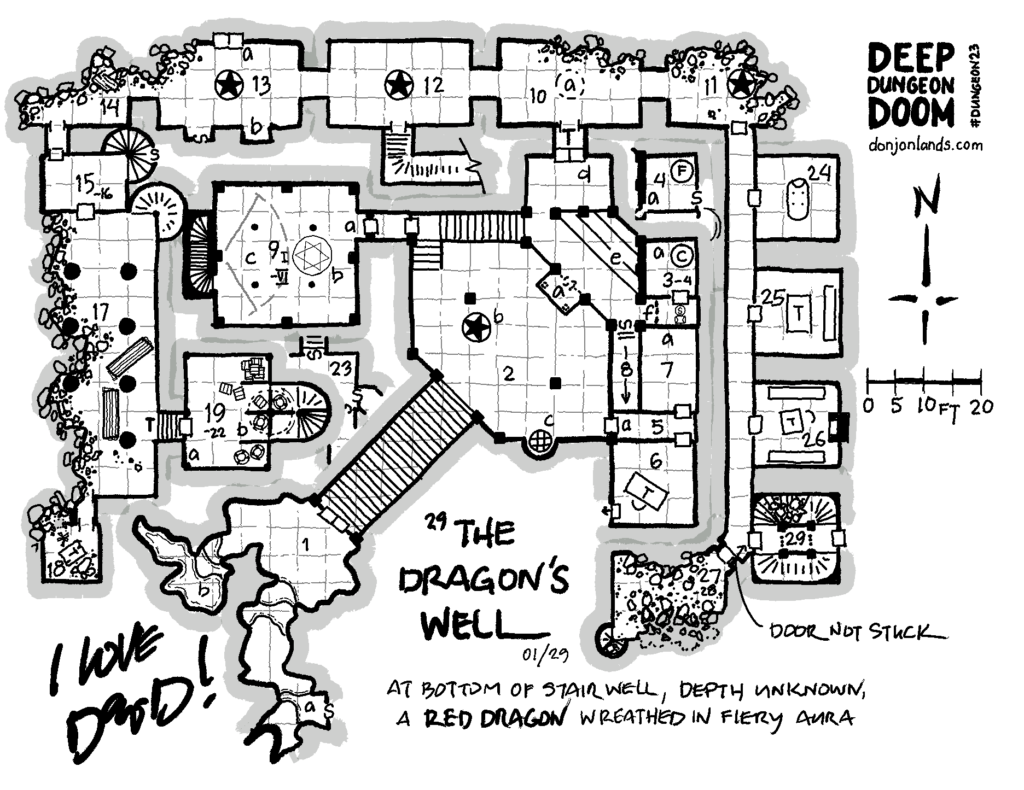Alternative Method to Increase Prime Requisite for XP Bonus
In “Three Paradigms: Evolution of Ability Score Adjustments and the Prime Requisite Bonus in Old-School D&D,” I stated my preference for the complimentary paradigm from OD&D over the later practice paradigm to determine experience-point bonuses. The Pandemonium Society had another idea. They used both.
This is the 20th in a continuing series of articles, which reedits house rules for Holmes Basic D&D from 40-year-old game club newsletters. Mentions of house rules are in bold text and followed by a [bracketed category designator].
For rules category descriptions and more about the newsletters, see “About the Reedition of Phenster’s.” For an index of articles, see Coming Up in “Pandemonium Society House Rules.”
Phenster’s Pandemonium Society House Rules is a work of fiction. Names, characters, businesses, events, incidents, and newsletters are either products of the author’s imagination or are used in a fictitious manner. Any resemblance to actual persons, living or dead, or actual events is pure coincidence.
Another Way to Adjust Ability Scores for XP
Ivanhoe tells me he doesn't use the rules for bonus XP in his AD&D campaign because it's too much math. In the Pandemonium Society, we use bonus XP for high prime requisites. Cypher helps us with the math. It's really pretty easy the way she explains it. But we didn't much use the rule that says you can change your ability scores when you roll up a character.
Like, if you want to be a fighter, you can subtract 2 from your INT and add 1 to STR, and a cleric or magic-user can subtract 3 from STR and add 1 to WIS or INT (for M-U). The higher your prime requisite the more XP you get.
That system worked for Beowulf because he didn't care about being intelligent. He just wanted to be a burly brute. But Tombs wanted to play the cleric. They have to be wise and be able to fight pretty good, so he didn't want to lower his strength.
I rolled a 13 for INT, a 15 WIS, and 12 STR. I could've been a cleric or an elf, but I really wanted to be a magic-user of the wise-old-wizard kind. A wise old wizard is usually frail so I lowered my STR to raise my INT to 14. Not enough to get 10% extra XP, but I got another language. I could have lowered my WIS 2 to get another INT, but a 13 WIS is barely above average, so I didn't want to do it.
Tombs and I talked it over with Hazard, and we came to a compromise. Hazard let us use the points to raise our prime requisite score, just like in the rulebook, except we didn't really change the scores. For example, I used 6 WIS points to make a 17 in my prime requisite without lowering WIS or raising INT. I’m still wise (15) and not any more intelligent (14), but I get a 10% bonus on XP. Tombs used 3 points of STR, without lowering it, to raise his prime requisite to 15, but his WIS is still 14.
Of course, everyone wanted to do it that way then. Except for Beowulf. He still wanted to be a brute. Hazard said we could do it either way: changing the scores or just using the points toward our prime requisites, or both. But just not using the same points twice.
—from L’avant garde #59 (January 1984)
Alternative Method to Increase Prime Requisite [E]
After generating ability scores, instead of raising and lowering scores (as described in Holmes: Adjusting Ability Scores, 6), the player uses points from certain above average scores to increase the prime requisite score only as it applies to the experience-point bonus. All constraints—used abilities by class, number of points used, minimum scores, etc.—are according to Holmes. The only difference is that no ability scores are raised or lowered.
Using this method, it helps to think of the prime requisite as a separate score, initially equal to the class’s primary ability score.
I put the alternative method in the [E] Extra category because it’s quick and easy: Count points above 9 in one or two abilities and add one or more points to another score. Furthermore, as no sacrifice is made, players have no barrier—only the prospect of earning more XP.
Strength Not Complimentary for Magic-Users [E]
When using the Alternative Method to Increase Prime Requisite [E], magic-users cannot use points of Strength to increase Intelligence.
As in OD&D’s Men & Magic, high Intelligence makes a more clever fighter, but a strong magic-user is no more adept in the profession. The Pandemonium Society seems to ignore this point.
Combined Methods to Increase Prime Requisite [P]
The alternative method may be used together with that described in Holmes, though points may only be used for one method.
In Phenster’s example, he reduced his Strength score to raise Intelligence, but when using Wisdom, he adjusted neither score.
For simplicity during character creation, I suggest using Holmes’s raise-and-lower method first to get the desired ability score bonuses, Then use the alternative method to figure the final prime requisite score for the XP bonus.
Because it effectively adds a second step to character creation while at the same reintroducing the time-consuming min/max decisions, this one goes in [P] Pandemonium.
Simplifying the Exchange Rate
We might simplify both methods by setting the exchange rate at 2 for 1 in all cases. I don’t propose it here for three reasons.
- I try—though not always successfully—to avoid B/X-isms in Phenster’s.
- While the Holmes spirit is simplicity in one sense, it also embraces a certain complexity, most often where it fails to modify rules from OD&D.
- The difference in the exchange rate, 2 or 3 for 1 depending on ability and class, implies a difference in the importance of each ability to each class. Consider that the more intelligent fighter improves faster than the wiser one (exchanging 2 INT or 3 WIS for 1). Likewise, the smarter cleric improves faster than the more brawny (2 INT or 3 STR for 1). And the more successful thief must be not only intelligent but also wise (2 INT and 1 WIS for 1). I appreciate this nuance.
